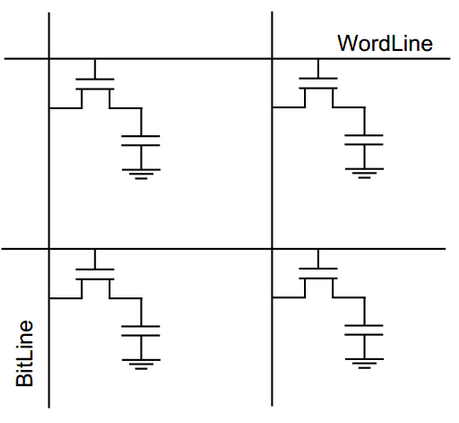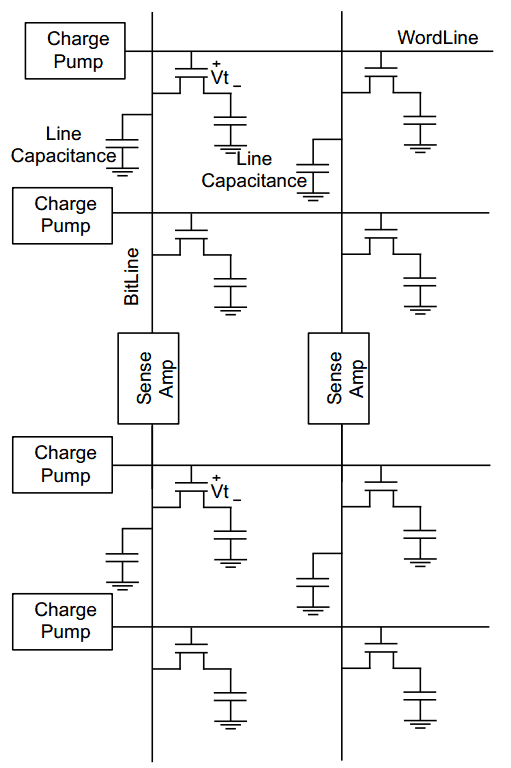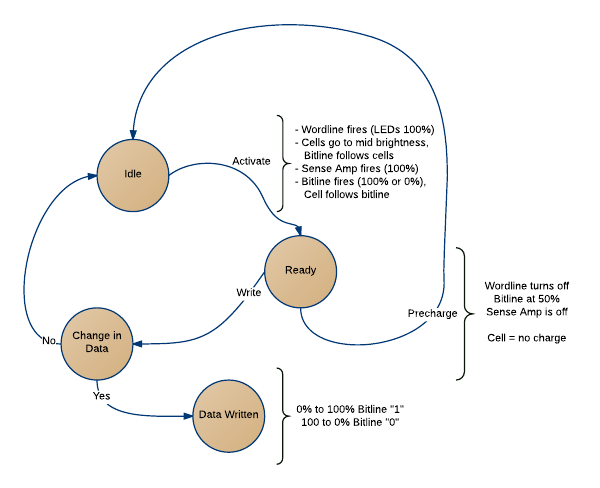Background Information
What Is DRAM?
DRAM
is a type of dynamic RAM memory that utilizes the charge of a capacitor
to store ones and zeros. A single piece of DRAM is composed of a
large two dimensional array of cells containing ones or zeros that are
connected by bitlines and wordlines. Each individual cell can be
accessed by utilizing the intersection of a specific wordline and
bitline, and reading from or storing to the cell at this address.
In
the idealized model, a single transistor and a single capacitor are
used to form a cell. When the wordline of the cell is high, the
transistor turns on and the capacitor can be written to or read from on
the bit line. Handy though this model is for understanding the
addressing of the cells, it would not work if it was implemented.
 Figure 1
Figure 1
Idealized DRAM, and the problems with it
 Figure 2Realistic DRAM model
Figure 2Realistic DRAM model
 Figure 3Flowchart of what happens to the LEDs iin the process of a write and read
Figure 3Flowchart of what happens to the LEDs iin the process of a write and read
This
shows the working of a single cell, but during DRAM fabrication there
is always the chance of creating a cell that doesn't work. For
this eventuality excess cells are created in the array. If a
computer tries to read from or write to a broken cell it detects that the cell is broken and rewrites the address of that cell to one of the excess cells.


